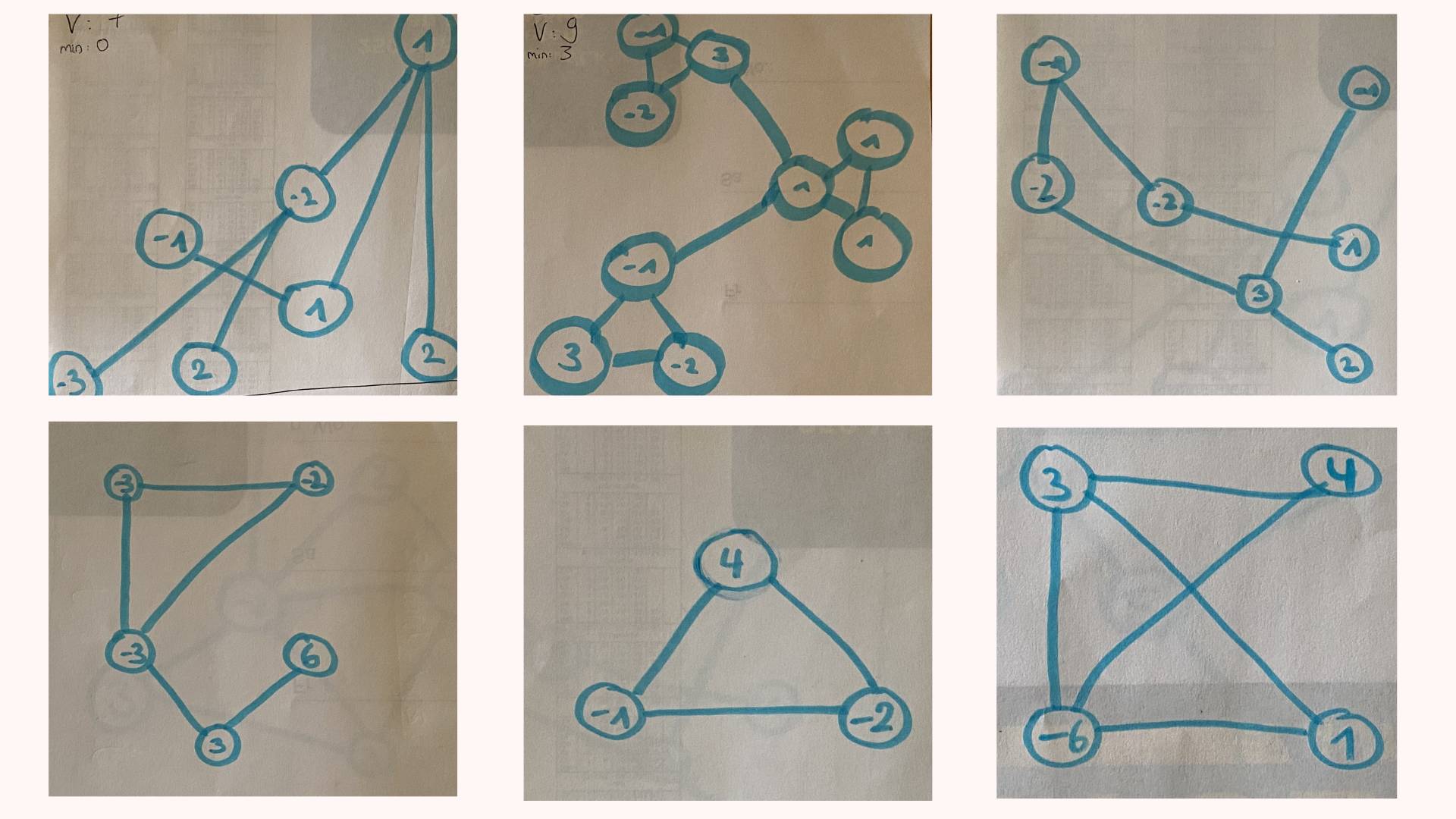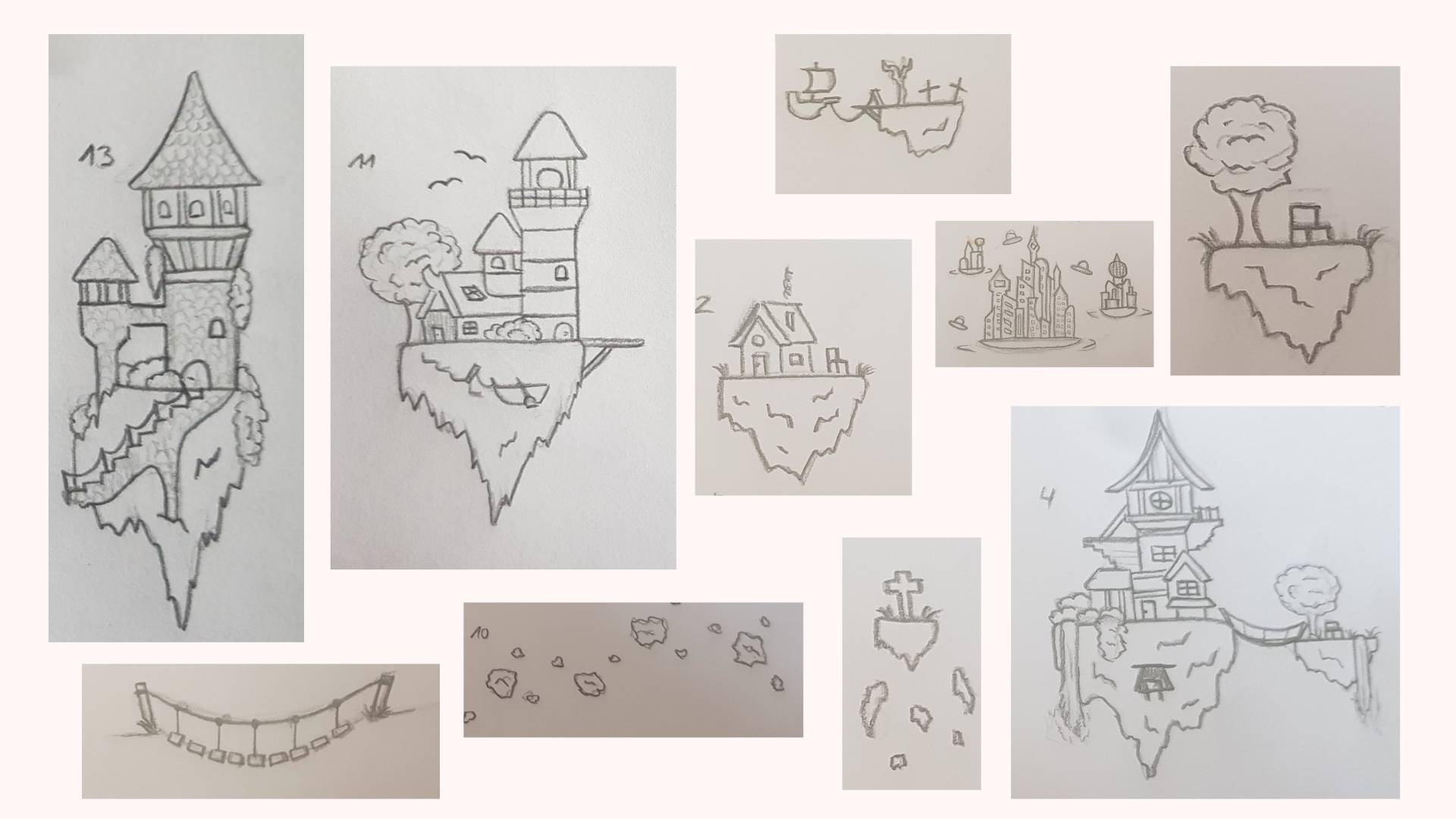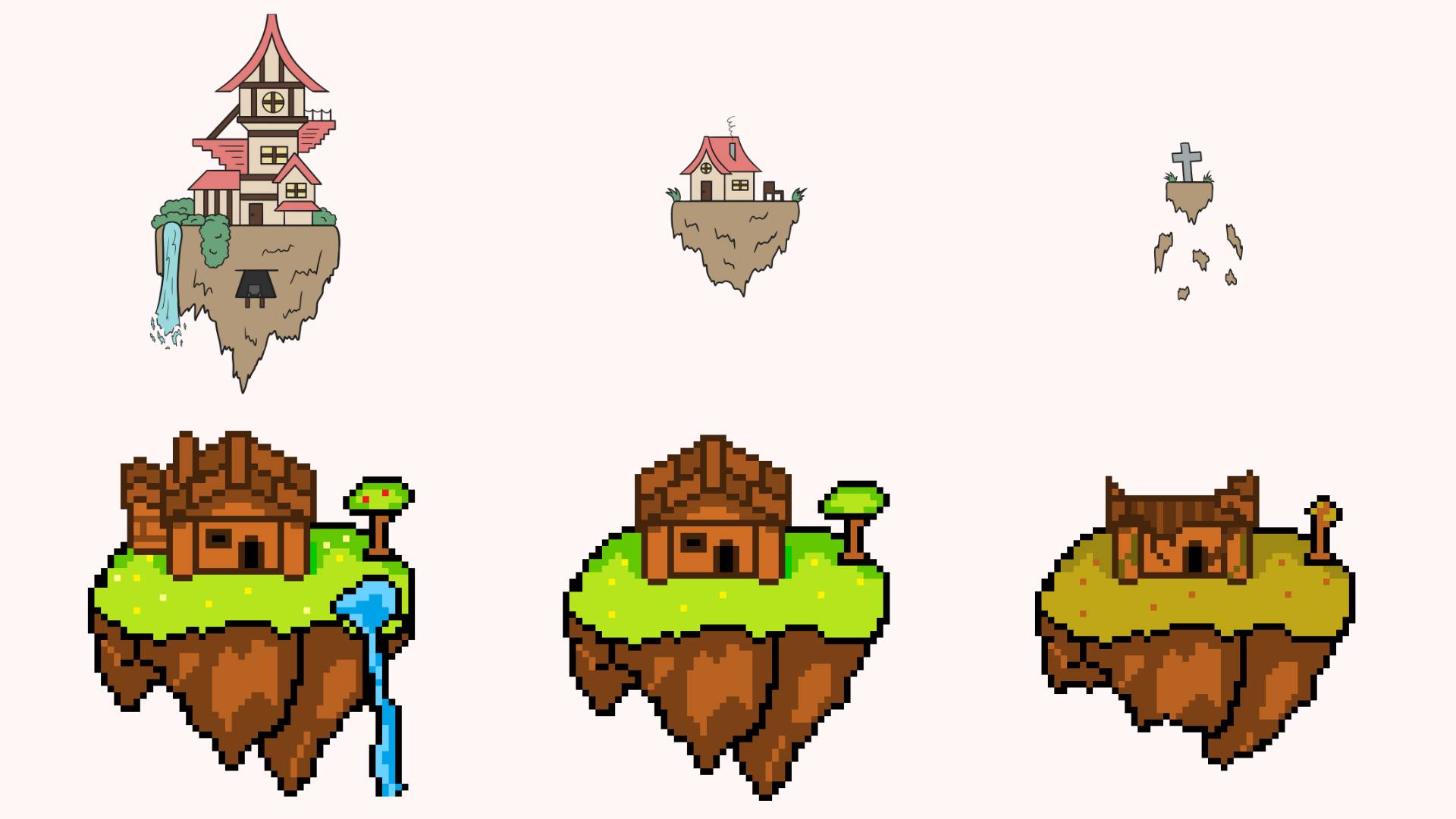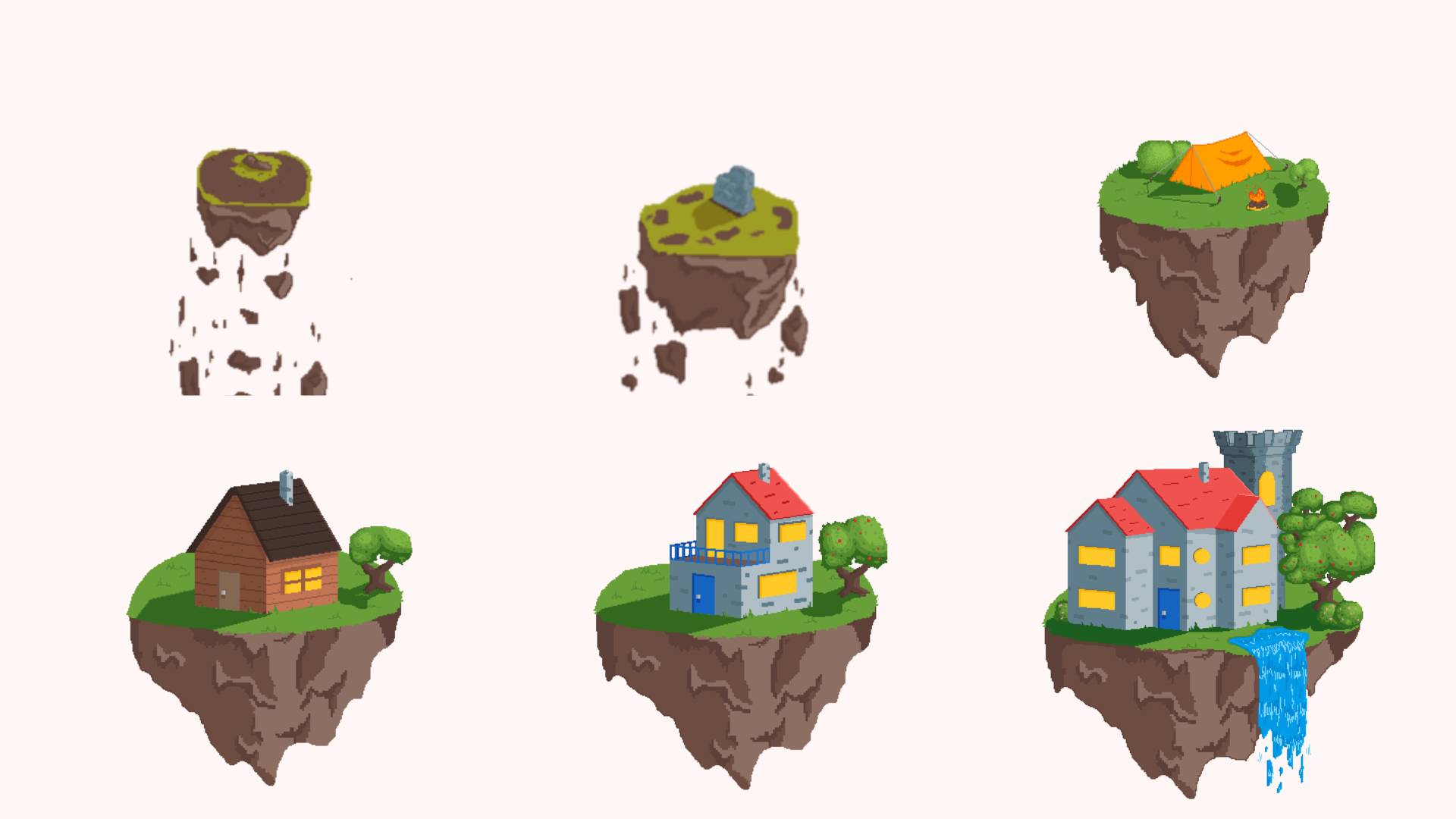In our first sprints, we created a prototype. A main menu level menu and first level were made. It was the basis for our continued sprints and work to add further features, improve existing necessities and pep up the assets and design. For the design process, we needed to decide what type of assets and style we wanted to use. We searched for inspiration and quickly created multiple sketches of first ideas. After those initial steps, we decided on the pixel art style, since it’s a common indie game aesthetic that we as gamers appreciate. With that, it went onto the actual drawing process, where many of us learned new skills.
The logo was the last to be made, since we wanted a clear idea of our game, before creating such an important branding. Out of 16 options, we chose the simple text on islands, since it emphasises the general theme of our game.Research
SCRUM
Prototyping

Developement
Designing



Final Touches